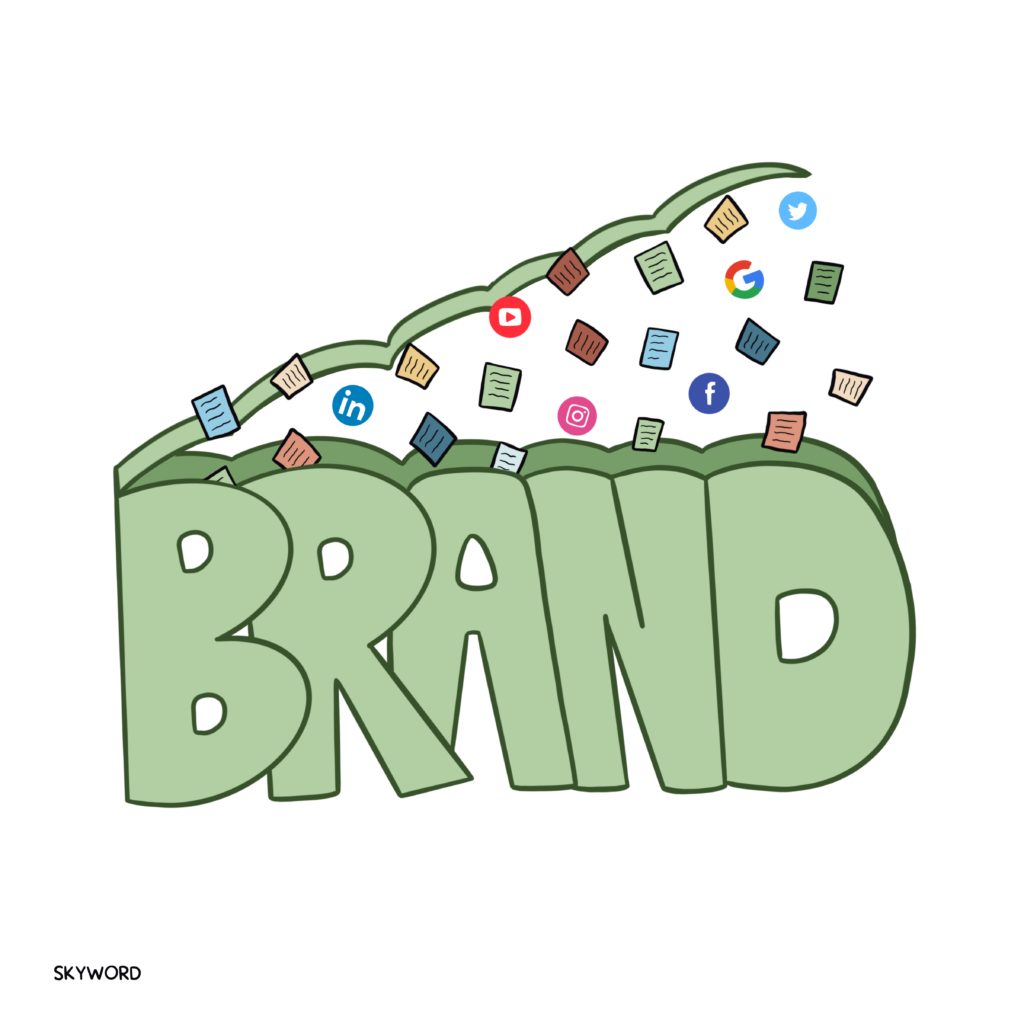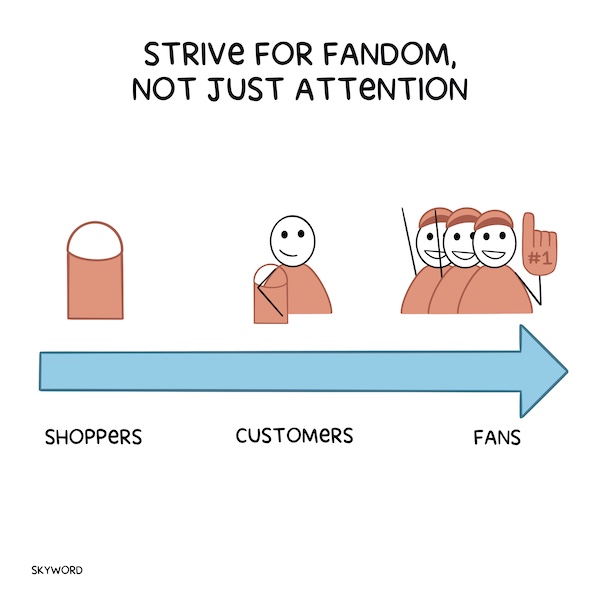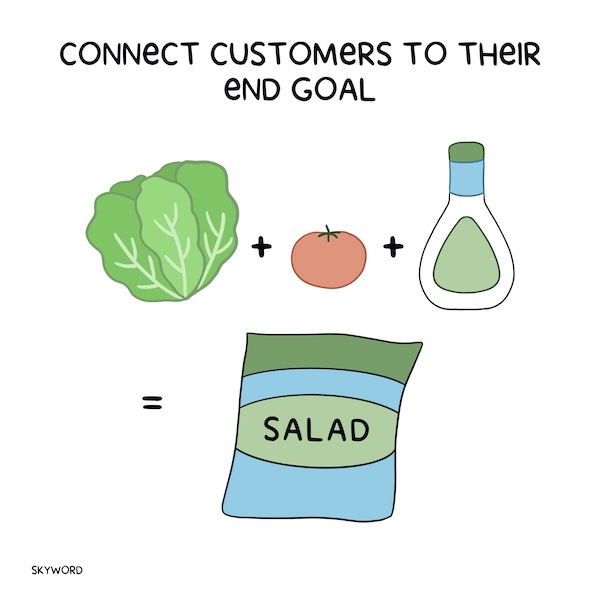Content Strategy
Digital Marketing: Here’s What Getting It Right Looks Like
By Andrew Wheeler on September 9, 2022
Subscribe to our monthly newsletter, Content & Context, to receive more insights and updates on the content marketing world from Skyword CEO, Andrew C. Wheeler.
It used to be that supply chain dominance equaled market dominance. That changed when an explosion of D2C upstarts like Dollar Shave Club, Drizly, Warby Parker, and Stitch Fix proved that a digitally native, social media-savvy marketing strategy was enough to steal significant market share from even well-established consumer brands.
In the process, these brands pioneered new ways of using content to simultaneously build direct customer relationships, convey a unique brand identity, and collect audience data—activities previously siloed within direct marketing, brand marketing, and customer experience teams, respectively. In sum, they established a modern content marketing playbook that more traditional brands have started to copy.
Especially since the pandemic, the sheer number of brands staking claims in the digital economy has introduced a new set of challenges:
- Digital advertising costs are being driven up by intense competition, including from established brands with deep pockets.
- Consumers and business buyers expect a premium omnichannel experience, regardless of the brand.
- Brands must fight harder for differentiation online, where it's easy for buyers to research and comparison shop.
- It's more difficult to maintain a strong brand identity and messaging across a growing number of digital channels.

As a result, many brands are clocking lower returns from their usual marketing investments.
So I want to take this opportunity to reflect on some of the lean principles that made D2C marketing surprisingly effective—and how any brand can adapt them for success in today's digital climate. Here are three of the most important:
1. The Goldilocks Principle
In the early days of D2C, many brands targeted mature markets, found traction with a niche audience, and then became successful by doubling down with laser-focused messaging. Now we see this play out in reverse. Just take Discord, a brand that grew from being a chat app tailor-made for gamers to disrupting the broader social media landscape—precisely because it catered so well to a powerful niche audience.
With the tools to access more audience data than ever before, your brand has the opportunity to identify the micro audiences consuming your content and, even more importantly, pinpoint the micro topics that characterize their purchase process. Use this data to identify your niche and own it.
Too often, I see brands spending time and effort ranking for terms or dabbling in topics that are unlikely to move the needle for their brand. Instead of trying to be an expert in 'all things’ for a broad customer base, customize your content for the people most likely to benefit from your products and the information they need that you're uniquely qualified to provide.
Imagine for a second that your brand is a mortgage lender. Your target audience isn't people just curious about mortgages or even homeowners—93% of whom aren't looking for new mortgages; it's people in the market for a mortgage.
What content is "just right" for them? (This is where the Goldilocks concept comes in). Likely, it's content that helps them compare interest rates, understand what they can afford, and navigate the loan process. Maybe those needs vary depending on if they're first-time home buyers, single, or married with kids. Zero in on those questions, channel all your passion into answering them and be the most qualified expert to show up with help when and where they need it.
This frees you up to focus, first, on truly owning the conversations that are critical to your business and native to your expertise vs. those that are tangential to your brand.
 2. The True Fans Principle
2. The True Fans Principle
D2C brands shook up marketing early on partly because they tapped into timely shifts in consumer culture:
- Embracing innovative subscription models;
- Communicating through influencers;
- and positioning themselves in opposition to "stuffy" brands they painted as out of touch with customer needs.
A perfect example is Dollar Shave Club, which went to market with an affordable subscription-based razor delivery service. Its irreverent take on the 'old school' razor market instantly struck a chord with younger consumers. The brand was so quick to gather a cult following that legacy giant Unilever—who couldn't manage to stomp out DSC's street cred—purchased the brand for ~$1 billion.
The enduring lesson here is to compete for fandom, not just attention. As anyone who's ever watched a Marvel movie or tracked the rise of NFTs can attest, the ability to tap into the aspirations of a passionate group is a powerful thing.
How do you grow a built-in fan base with content?
It takes commitment, not just campaigns. Build a publication, host a community, and create experiences that reflect your customers' cultural identity, deliver exclusive value, and spur community interaction. The better able you are to invite customers into a distinctive community that they identify with and want to join, the greater your competitive advantage.
This only reinforces the need to partner with creators who are:
- Expert craftspeople in the specific storytelling mediums you want to use;
- Immersed, not just conversant, in the industries, topics, and/or cultures you're covering;
- Representative of the audiences you want to connect with;
- And distant enough from your brand to bring a customer perspective and fresh insights to the table.

3. The Salad Bag Principle
D2C brands' claim to fame is cutting the middlemen out of the customer value chain and exploiting digital marketing shortcuts along the way. The way they reimagined supply chain and marketing dynamics is precisely how brands today should look at reimagining their customer experience. Both business buyers and consumers seek out brands that deliver quality with simplicity and convenience.
The best analogy I've heard to describe this is the salad bag. Grocery brands spent years evolving how to package lettuce: heads of lettuce, leaves of lettuce, spring mixes…until one day, someone brilliant decided to focus on the end game instead. When consumers buy lettuce, their ultimate goal is usually to make a salad. So why not make it easier and combine the ingredients for them?
Voila, the salad bag was born—and went on to fuel a whole consumer category of portion-controlled foods.

Assess your customer journey in terms of how well you help your customers achieve their desired end. Are you using content strategically throughout that journey to eliminate, simplify, or combine the steps it takes for your customers to consider, evaluate, choose, and experience solutions?
The primary aim of content isn't to gratify execs or glorify your brand; it's to "nudge" customers towards your products by removing barriers and presenting information that helps them make better, more informed decisions. Clarify your mission and de-clutter your content experience accordingly.
—----------
As a marketer, I fully recognize that delivering unique, tailored content experiences across channels and touchpoints can feel beyond reach. It requires you to constantly focus on your fanbase, create messaging that resonates at the individual level, and engineer unique experiences.
I'm excited to announce that, in the coming months, we're adding a new feature to our Skyword360 technology that uses AI to support this effort, making content personalization and atomization easier—and more cost-effective—for marketers.
Ping me if you're interested in discussing it now, or stay tuned for more details in my next post.
